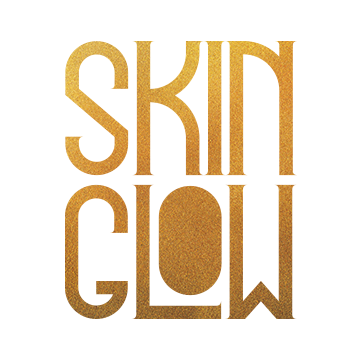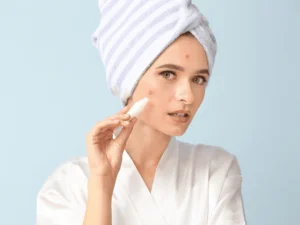Clear your acne!
2020 has not been an easy year! We discovered that certain new practices this year, actually aggravated acne! We have seen an increase in maskne, which is acne worsen by daily mask use. So it becomes crucially important to recognize how many types of acne we usually deal with and which is our condition.
- Inflammatory acne is characterised by red inflamed papules, pustules and nodules which will often lead to scarring and hyperpigmentation
- Hormonal acne is characterised by adult-onset acne with inflammatory acne along jawline, cheeks and neck
- Nodulocystic acne is characterised by severe inflammatory acne with deep nodules and pustules
- Comedonal acne is characterised by blackheads and whiteheads also known as comedones
So how do we develop acne?
First of all, it is an extremely common skin condition in adolescents, but adults too. Sebum production is stimulated by hormones which in combination with dead skin will lead to white and blackheads (comedones). Our own skin bacteria Propionobacterium acnes also known now as Cutibacterium acnes will digest lipids from excessive sebum production, inducing an inflammatory papule.
In addition to this, one size does not fit all, therefore some of us, will produce intense inflammation leading to pustular and cystic acne, which in return will lead to scarring and hyperpigmentation.
Diet and acne
A common question we often hear: is your diet associated with acne in adults?
A recent study with more than 20000 participants revealed that consumption of fatty and sugary products, sugary beverages and milk was associated with current acne in adults.
These findings are extremely interesting and suggest that a Western diet which is rich in animal products and fatty and sugary foods is indeed associated with the presence of acne in adults.
Therefore, consumption of milk, sugary beverages and fatty and sugary products might need to be reduced and replaced by fruits and vegetables with a low GI index, healthy nuts and plant-based foods in order to see a significant improvement in acne.
Initial assessment
Before starting any facial or body treatments, it is definitely useful to have your skin assessed by a medical practitioner. There are various devices like Skinscope or Visia designed to reveal skin concerns which are visible in daylight mode, but also deeper issues which are visible under LED-UV light mode.
It will help make a clear diagnosis and a personalised treatment plan while tracking your progress, but also plan prevention strategies!
The daylight mode allows for the clear illumination of visible skin concerns including acne lesions, redness, blotchiness, flushing, uneven skin tone and pigmentation, but also fine lines and wrinkles.
The LED-UV light mode detects fluorescence in skin for clearer identification of skin conditions not visible in everyday light like deeper pigmentation, poor desquamation, dehydration, congested pores and excessive oiliness which will be reflected in a variety of fluorescent shades.
Treatment
Treating acne is extremely important in order to prevent acne scarring and hyperpigmentation. Only 20-30% of the scars will improve over time therefore further treatments will be required. Treatment depends on severity, type of skin and colour.
Firstly, we shall discuss chemical peels used to treat acne. You have probably heard million times by now, but the key to smooth and clear skin is exfoliation. Chemical peels are exfoliants that help treat and prevent the appearance of acne lesions, but also improve overall skin texture, have anti-ageing effects and minimize the appearance of pores and post-inflammatory hyperpigmentation together with melasma and rosacea.
Superficial chemical peels can be classified in alpha Hydroxy Acid (AHA) and Beta Hydroxy Acid (BHA) are two hydroxyl acids (BHAs and AHAs) that differ by their lipid-water solubility. AHAs are water soluble and BHAs are oil soluble.
- Salicylic acid peel is the only BHA known for the treatment of acne and acne-prone skin types. It is the most used chemical peel for acne and it is derived from willow bark.
BHA’s are able to enter deeper into pores, which contain sebum and help to control exfoliation of the dead skin cells and oil that build up inside the pore, through its antibacterial and anti-inflammatory properties.
AHA are derived naturally from sources such as bitter almonds (mandelic), sour milk (lactic) or sugar cane (glycolic).
- Mandelic
- Lactic
- Glycolic
These are considered superficial or mild peels, that will help in cell renewal, reducing acne, superficial lines, address minor hyperpigmentation with minimal to no down time. Usually used in a course of 5-6 treatments they can dramatically improve the appearance and texture of your skin.
If the beneficial effects of AHAs on the skin were discovered in the early 1970s, more recently, a new generation of AHAs, called polyhydroxyacids (PHAs), has been discovered, which provide similar effects to AHAs, with minimization of irritation.
PHAs, such as lactobionic acid and gluconolactone, are suitable for sensitive skin, including rosacea and atopic dermatitis. Few people can have acne in addition to other chronic dermatological conditions. PHAs have additional humectant and moisturizing properties compared to AHAs and can improve skin barrier function, particularly at the level of the upper layer of the skin (stratum corneum).
- Gluconolacone is a natural component of the skin. Because it has a higher molecular weight then glycolic acid (AHA), the entry of molecules is done gradually in the skin, which minimizes irritation.
- Lactobionic acid, produced by lactose oxidation, is a humectant with the ability to attract and retain water, better than common humectants such as glycerin and sorbitol.
Most PHAs still contain antioxidant properties. PHAs such as gluconolacone or lactobionic acid can be used in combination with procedures such as laser treatments to increase the therapeutic effect.
Medium chemical peels include TCA 35%-50%.
- TCA is appropriate for congested skin and acne, intense sun damage and pigmentation, but also deeper lines and wrinkles.
Deep chemical peels include Baker’s peel or Phenol peel.
All these skin peels will definitely induce a sunburn-like sensation and exfoliation that can last for up to 10 days depending on the type of the chemical peel performed. A gentle cleanser should be used and a moisturizer at least twice daily. Sunscreen should be worn daily and sun avoidance advice strictly followed.
One of the best collagen induction therapies, microneedling is the best way to improve the appearance of acne and acne scars. It induces formation of collagen and elastin, the two main proteins predominantly responsible for the structure of the skin. The outcome is youthful, rejuvenated looking skin. Microneedling has been safely used in a wide variety of other skin conditions like enlarged pores, fine lines, wrinkles and stretch marks on the face and body and even hair loss.
The microneedling device involves using adjustable, disposable microscopic needles that will create micro-channels with a variable depth from 0.25mm to 2.5mm. These micro injuries will stimulate our body’s natural wound healing response, thereby releasing innate growth factors and inducing new collagen formation. Medical microneedlng devices used in clinics have the potential to create tissue remodelling in many areas of the body, including the face, neck, chest, arms, hands, legs, abdomen and back with long-lasting results and little to no downtime afterwards. It also allows a deeper transdermal delivery of active substances through our skin barrier offering a better penetration of active ingredients and cosmeceuticals.
What does the microneedling treatment involve?
Prior to the treatment a topical anaesthetic can be applied for 30 minutes for additional comfort.
The microneedling device is carefully glided across the skin in order to create microscopic puncture wounds which stimulate underlying tissue to produce new elastin and collagen, to repair scarred skin and reduce acne lesions. Redness and possible bleeding spots can be observed. Aftercare advice includes not applying any products on one’s skin for 12 hours in order to prevent infection. The treated area can be red, swollen and warm for 24-48 hours after the treatment, but most patients will notice a significant reduction in the first few hours.
Treatment time lasts for about an hour and is spaced 6 weeks apart. 4-6 treatments are required for best results. You can also expect continued improvement in your skin’s condition over 6 to 12 months with several treatments.
Mesotherapy for acne scarring
Mesotherapy is a novel therapy which can act synergistically to improve uneven skin texture and the appearance of acne scars by stimulating new collagen and elastin production.
Mesotherapy is a treatment capable of improving acne scars by providing small quantities of active ingredients like vitamins, antioxidants and hyaluronic acid directly to the area where they are needed.
The vitamins stimulate the skin cells, especially fibroblasts, which cause increased production of collagen and elastin fibres, as well as neutralising free radicals and improving circulation as well.
Risks involved
It might sound painful, but there is always a topical anaesthetic applied prior to this procedure. There’s no real risk associated with Mesotherapy. In addition, cool air or ice packs may be used to minimize pain. In the event there is any discomfort. Bruising can occur, but usually resolves within a week.
Who does it work for?
Anyone experiencing acne scarring is essentially a good candidate for Mesotherapy treatments.
For best results, being consistent is definitely the key. Treatments are typically performed once every 2 weeks to a month for the first 3-4 months, and then every 3-6 months thereafter, depending on the individual patient’s response and results. Following this protocol, anticipated results can first be seen within two to three months.
- Lasers
Lasers can be used in the treatment of acne and acne scarring.
Both ablative and non-ablative lasers represent excellent strategies. The choice of treatment depends if we are dealing with atrophic scars like box, rolling or icepick acne scars or hypertrophic scars, but most importantly on the patient’s wish in regards to the number of treatments and expected downtime.
Ablative lasers effectively treat acne scarring besides a broad range of skin conditions through a process called tissue evaporation or ablation which simply means removing all or a part of the skin. As a consequence, the body’s natural healing processes then replace the injured skin with new and healthy tissue improving dramatically the appearance of acne scars. An example is a CO2 laser which have been used for decades to treat acne scars, but this is an expensive treatment modality with significant downtime.
On the other hand, non-ablative lasers will not injure the surface of the skin while stimulating new collagen and elastin production. These lasers carry less downtime and no risk of infection in comparison to ablative lasers therefore are suitable for active clients who prefer milder treatments with multiple sessions but excellent results.
Our approach
As an example, we recommend combination treatments with the above technologies. We use Laser Genesis as a non-invasive, non-ablative laser that gently delivers heat to the dermal layer of the skin to stimulate new collagen, tighten the underlying skin and improve acne and scars and diminish pore size while also improving fine lines, wrinkles, uneven skin texture and tone. Laser Genesis treatments are cumulative therefore multiple sessions are needed to improve acne and acne scarring and provide a more even skin texture and tone.
We offer all our customers a complimentary consultation to understand better their condition and discuss together a treatment plan to match customer’s lifestyle and achieve the desired results.
Our approach has yielded great results and in part is the merit of our customers who understand the importance of following our advice of the treatment plan and also the homecare recommendations.
You can book you complementary consultation now, by email @ office@skinglowclinic.co.uk or text us 07760 888647.





